Panama Canal shipping traffic to be slashed in half as extreme drought forces deeper cuts to passages
The Panama Canal Authority cut down the number and weight of ships that can go through the canal every day due to dangerously low water levels during an ongoing drought, exacerbated by El Nino.
Making It Rain: Drought disrupts global shipping at Panama Canal
The Panama Canal is limiting the crossing of container ships, and drought is to blame. FOX Weather meteorologist Jason Frazer explains how this could cause shipping delays. It's part of this weekend's segment we call,
PANAMA CANAL – The shipping shortcut between the Atlantic and the Pacific just got a little slower. Authorities again slashed the number of ships allowed through the Panama Canal per day due to extreme drought.
The Panama Canal Authority already reduced ship numbers in August from 36 per day to 32. Now, successive monthly cuts will drop the number of ships per day down to 18 by February. The authority also set weight and depth limits, meaning only smaller ships and ships carrying less cargo can use the 51-mile passage.
Lowest water level since canal opened
The rainy season, which usually runs from late April to November, has been anything but this year. Water needed to flood the locks and float ships across Central America is just not there. This is the lowest water level in the 109 years since the canal was opened, according to Earth.org.
DROUGHT FORCES PANAMA CANAL TO REDUCE MAJOR SHIPPING TRAFFIC
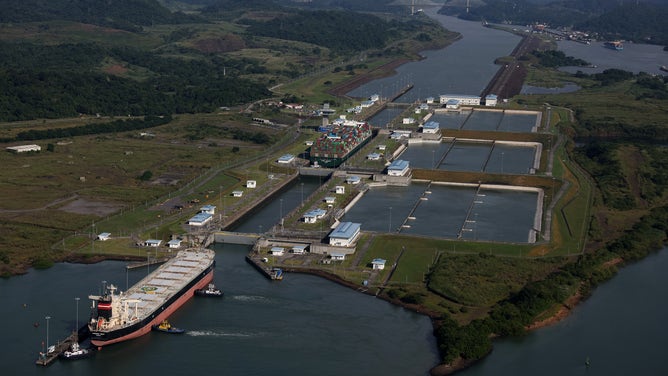
The container ship Tampa Triumph passes through the Miraflores Locks as it transits the Panama Canal on September 20, 2023 in Panama City, Panama.
(Justin Sullivan / Getty Images)
"Despite all measures taken, the level of Gatun Lake has continued to decline to unprecedented levels for this time of year," announced the Panama Canal Authority in a statement. "The recorded precipitation for October has been the lowest on record since 1950 (41% below), and so far, 2023 ranks as the second-driest year for the same period."
The authority expects rainfall to be 38% below normal through the rest of the year.
Water from Gatun Lake and two others must float ships 85 feet above sea level to cross the continental divide and then down again to sea level, according to the authority. In all, 12 locks are filled and emptied to get ships across the country.
DRONE VIDEO SHOWS STRANDED SHIPS ON AMAZON RIVER AS PORT REACHES 121-YEAR LOW LEVELS
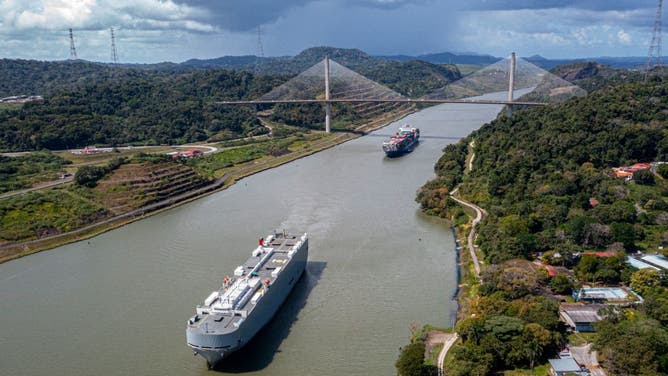
Every time a ship crosses the Miraflores Lock, the Panama Canal's most famous gate, 200 million liters of fresh water are discharged into the sea.
(Photo by LUIS ACOSTA/AFP via Getty Images / Getty Images)
ONGOING 22-YEAR DROUGHT IN WESTERN US IS DRIEST PERIOD IN OVER 1,200 YEARS, STUDY FINDS
That is a total of at least 50-million gallons of water lost into the ocean with each ship, which could fill almost 76 Olympic-size pools, according to the Council of Foreign Relations. Gatun also supplies fresh water to about half of Panama. Hellenic Shipping News reported that it is the only freshwater source for the country.
No rainfall recharge is leaving boats high and dry in the main lakes supplying the canal and the reservoir perilously low.
SCIENTISTS FEAR HEAT, DROUGHT KILLED AT LEAST 120 RARE DOLPHINS IN AMAZON
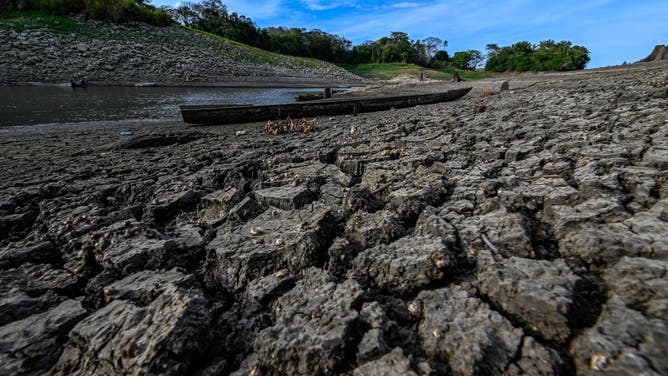
View of stranded boats at Alhajuela Lake during the summer drought, in Colon province, 50 km north of Panama City, Panama, on April 21, 2023. The Alhajuela lake is one of the main lakes that supplies water to the locks of the Panama Canal and is at its lowest level of recent years.
(LUIS ACOSTA/AFP / Getty Images)
Ship backlog could mean supply chain slow-downs
In August, more than 200 ships were waiting to cross in what the Wall Street Journal called the "biggest traffic jam of the seas." The average wait time was 9-11 days for booked travel. Unbooked travel wait times were nine months, according to Michigan State University.
The canal handles about 6% of global trade. An analysis of agency data showed more than 70% of the cargo that passed through the Panama Canal was either heading to or departing from the U.S. In 2022, 14,239 ships transited the canal carrying almost 326 tons of goods and generating $2 billion in revenue, according to the CFR. The council estimates that current restrictions will mean a $200 million drop in revenue.
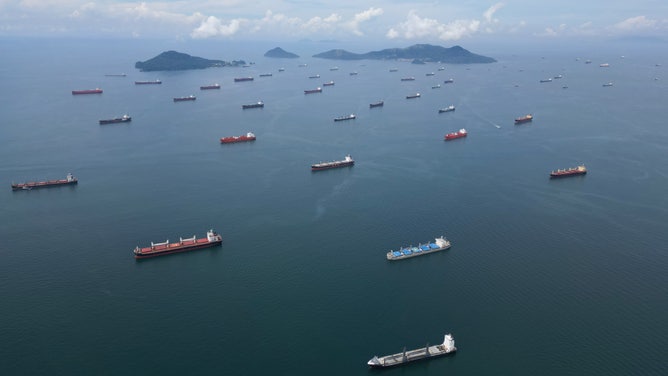
File: Ships waiting on the Pacific side of the canal on August 26, 2023.
(Mauricio Valenzuela/picture alliance / Getty Images)
Trade publications report that some shipping companies are spreading out loads to more boats to stay under the weight and depth limit. Other companies are taking longer routes through the Suez Canal, around the Cape of Good Hope and around Cape Horn. Ships departing West Coast ports save over 9,000 miles by cutting through the canal instead of sailing around Cape Horn, according to Britannica.com.
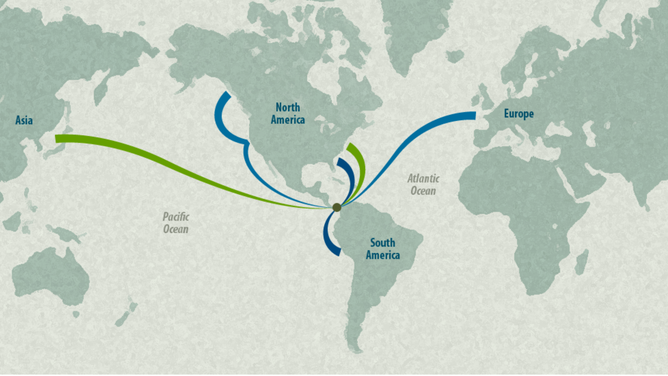
Common routes through the Panama Canal
(Georgia Tech Panama Logistics Innovation and Research Center / FOX Weather)
Some analysts fear that the canal clogs will impact supply chains and make holiday shopping more expensive and difficult, according to Michigan State.
El Niño, partially to blame
A strong El Niño pattern has cut down on rainfall, and meteorologists said there is a chance the phenomenon could become historically strong through the winter.
"The team favors at least a strong event with a 75-85% chance through November-January. There is a 3 in 10 chance of a historically strong event that rivals 2015-16 and 1997-98," wrote the Climate Prediction Center in its discussion. "Stronger El Niño events increase the likelihood of El Niño-related climate anomalies."
